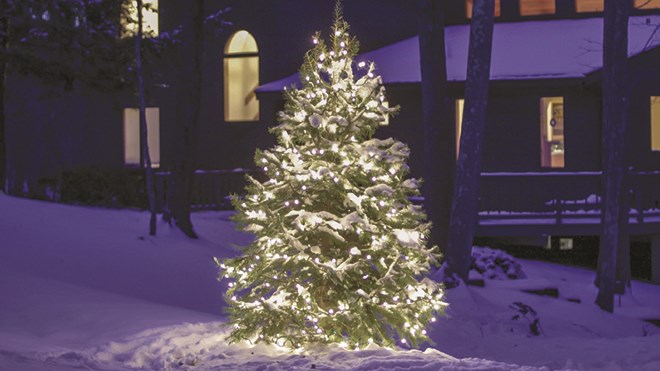On Dec. 6, 400 people gathered at the Marguerite and Gerry Lougheed Community Centre. They were attending the Christmas Service of Remembrance for the newly bereaved this year.
Over 20 years ago, my family and staff pioneered this service to support the widowed spouses, orphaned children and the bereaved parent. Such services are now organized by churches, community groups and funeral homes across the continent.
The inspiration for the service came from a question a father asked me in November. His 10-year-old son had died that August during an operation to correct a congenital heart condition. The question was should he and his wife put up a Christmas tree.
They were convinced it would be too sad, but sought my counsel and confirmation. I asked, “What was your son’s commitment to the Christmas tree?” Dick replied, “Jason loved the tree. He was the chief erector and decorator.”
“Then if you don’t put up a tree, are you saying you never had a 10-year-old who loved Christmas trees?” I asked.
I don’t think Dick liked my comments. I bumped into him in January and asked about the tree. He said he and his wife put it up. It was hard. It was sad. But it was good.
When family and friends visited their home, they said they didn’t think there would be a Christmas tree. Dick and his wife both said “It was Jason’s tree.” It lovingly celebrated his gift of memory.
Many bereaved people reading this article may not put up a tree, bake cookies or send cards. They would like just to forget all about Christmas. My experience with Dick and the Jason tree though me an important lesson: It is when we confront, rather than avoid, our sadness that we find healing.
The celebration of the gift of memory maintains the loved one’s presence in our lives. Preparing their favourite foods; sending cards with their story of past Christmas’ experiences; decorating the house by hanging their ties or scarves on trees; putting photos on Christmas stockings. As the non-bereaved population debates the merit of a real or artificial tree, bereaved people need to confront those real feelings Christmas can magnify.
The following suggestions may help:
- Keep a diary so you can maintain how you feel each day;
- Set aside 30 minutes each day for “me” time. Turn off the phone, computer, radio, television. Be quiet. Listen to your inner voice;
- Tell family and friends it is okay to say the deceased’s name. It’s a name you love.
- Volunteer to help others – it will increase your self-worth (i.e. ring bells for the Salvation Army)
- 10 days of Christmas Cups of Coffee. At the funeral everyone said just call them. Do it. They will be honoured.
- Visit the place where the ashes or casket are. Bring a card/gift and leave it. Have a visit with the deceased with the ability to leave those words at that special place.
- Give hugs! They are the covenant of caring. Give them as gifts with permission and appreciation.
These suggestions hopefully help the bereaved to journey to the stable not as Magi or shepherds, but people who know the best Christmas story is found in John 1:5: “The light came into the world and the darkness has never put it out.”
Gerry M. Lougheed Jr. is a licensed funeral director, general manager of Lougheed Funeral Homes and chair of the Bereavement Foundation of Sudbury.
Join Sudbury.com+
- Messages
- Post a Listing
- Your Listings
- Your Profile
- Your Subscriptions
- Your Likes
- Your Business
- Support Local News
- Payment History
Sudbury.com+ members
Already a +member?
Not a +member?
Sign up for a Sudbury.com+ account for instant access to upcoming contests, local offers, auctions and so much more.
